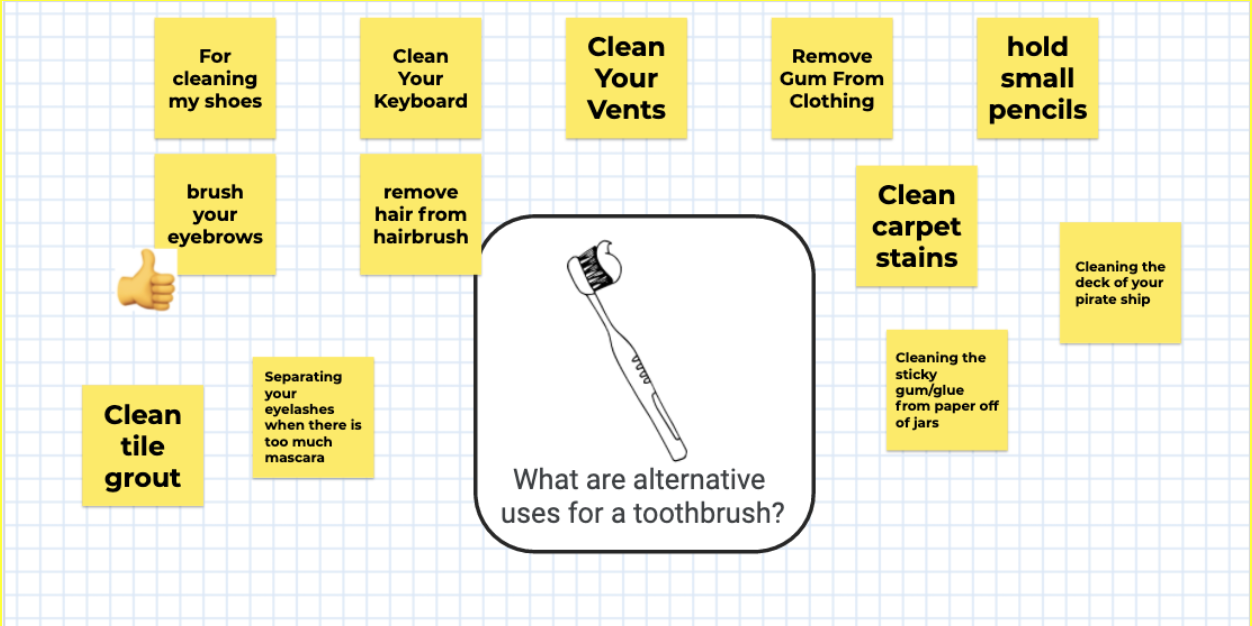Overview
When thinking about ways to collaboratively share ideas, build alignment, and push thinking, we often naturally jump to the age-old sticky note. This has been a favored item for classrooms and offices alike because it enables children and adults to uncover ideas in a collaborative, generative, and engaging manner. So, what do we do in the virtual world when in-person sticky-note activities aren’t possible?
There are many virtual strategies and tools to create the same type of sticky-note experience to reach these same goals in a remote environment. Google Jamboard has risen to the top for many people because of its price (free with a Google for Education or regular Google account), and because it can be accessed anytime and anywhere on the web. However, other programs have also developed engaging functionalities that enable non-Google users to collaborate digitally. Explore the programs below to discover more and identify which would work best for collaboration in your classroom, grade-level team meeting, or system-level discussion.
Alternative Digital Collaboration Tools to Jamboard
Zoom: Built-in annotations for video meetings
Google Hangouts: Built-in whiteboard feature for video meetings
Padlet: Simple, easy-to-organize space though limited to three boards for free users
Miro: A more complex tool for organizing and connecting thoughts; includes lite, free version with limitations. Miro also offers education options that are free. NOTE: Only for students who are over 13.
Using Virtual Sticky Notes Effectively
To simulate an in-person collaborative session using sticky notes, it is important to think about the variety of activities that can be done to ensure active sharing, understanding, connecting, and application. This list is not all-inclusive, but rather a sampling of the engaging and effective ways virtual collaboration can be done using one of the tools mentioned above.
Brainstorm and share ideas by having participants fill in various sticky notes (you can even color-code these notes by a participant and include multiple virtual “posters”).
Star favorites to agree with, second, and support other participants’ ideas - much like you would do during an in-person gallery walk.
Bucket ideas based on topic, commonalities, and more. The act of “bucketing” virtually can be done by moving around the sticky notes to bring common themes together. You can also take this one step further by circling and naming each group to further highlight themes from the brainstorming session.
Build action steps by taking common themes, areas of need, and/or interests and start putting those ideas into action based on a shared understanding and buy-in.
Do a gallery walk where participants first answer a question individually and then take time to read others’ ideas and pull out themes, ask questions, or have the opportunity to add more context to help clarify what they shared. Sharing a topic or content analysis can also help other participants fill gaps in understanding.
Use collaborative graphic organizers in which participants can add their thoughts to different pre-populated virtual posters or templates (e.g., KWL or RAND chart).
Utilize collaborative concept mapping by using the tool to work as a group on a sense-making activity after brainstorming has been completed.
Create a space for sharing or checking in, allowing participants to flexibly insert text and various objects (e.g., shapes, pictures) for generative or engaging activities (e.g., for lower elementary grades, students can move their names above different feeling words or images as a quick temperature-check before starting a lesson).

Strategy Resources
Using Jamboard to Bucket Ideas
One way to use Jamboard to take collaborative conversations deeper after brainstorming ideas is to... Learn More
Using Jamboard to Build Action Steps
Jamboard is a great place to align on next steps, based on what ideas were... Learn More